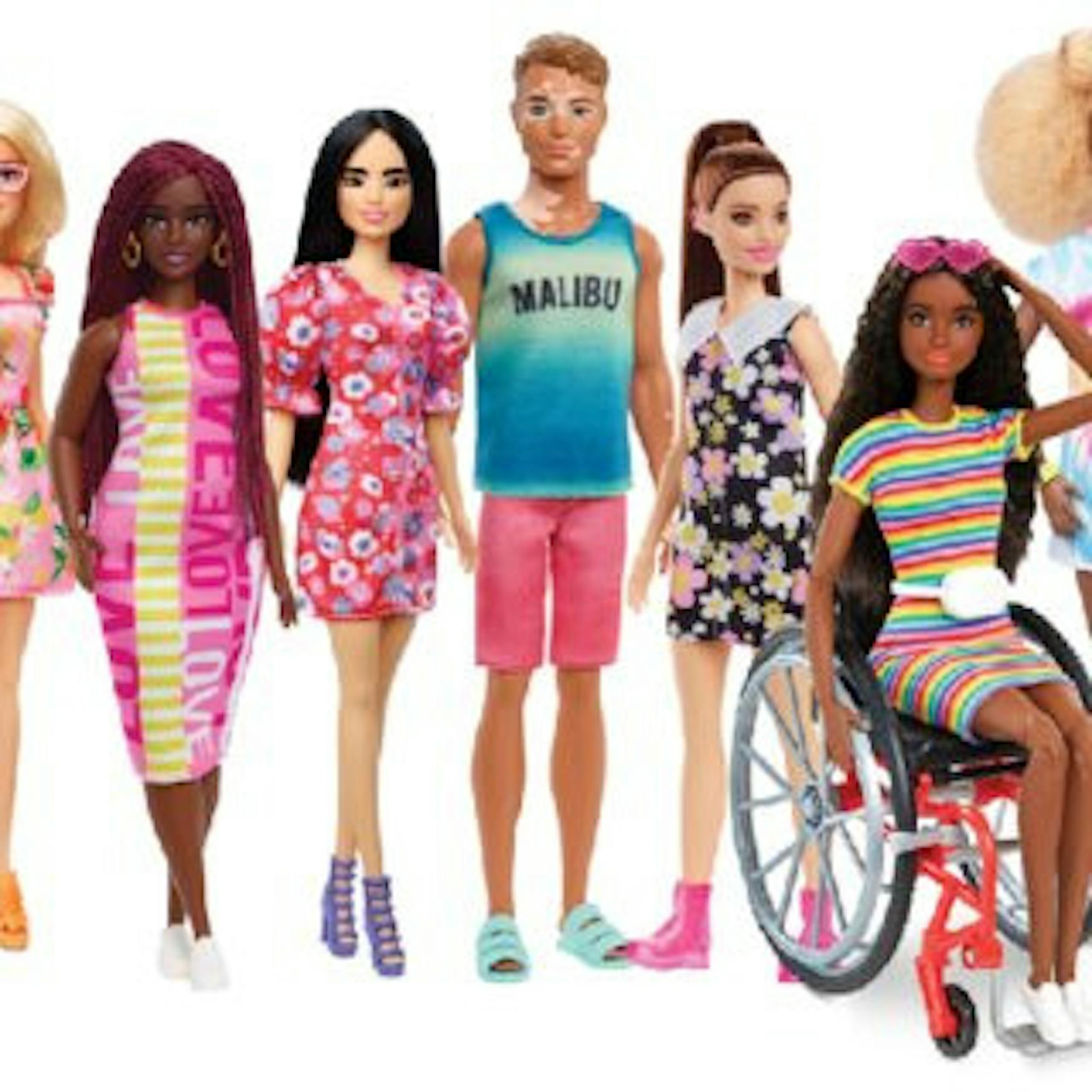Be your own Weird Barbie
The release of the film “Barbie” undoubtedly raised a frenzy this past summer as the allure of Barbie and her dream world not only applies to young girls who dream of “becoming” Barbie, but also to women of all ages who seek their childhood memories. However, rather than immediately showcasing Barbie’s iconic dream house and the signature Barbie pink, the movie takes a different approach by retelling the history of Barbie.
In the early days, baby dolls were the sole type of dolls that girls would play with, which confined girls to the role of mothers. It was not until the invention of Barbie that girls were no longer constrained to the role of a caregiver but were instead encouraged to become who they aspired to be. This raises an important question: Who do these girls aspire to be? Is it merely the image of perfection embodied by Barbie? Stereotypical Barbie — the quintessential image that comes to mind when we think of Barbie — takes center stage in this movie.
Her peaceful life is disrupted when two bizarre things happen: The idea of death consumes her thoughts and her once-perfect high-heeled feet become flat. Weird Barbie makes it clear that there is a rip in the barrier separating the Barbieland from the real world and compels Barbie to embark on a journey into the real world in search of the girl who plays with her to together solve the problem, as Barbie and the girl from the real world are “inextricably intertwined.”
A stereotypical Ken, Beach Ken accompanies Barbie to the real world. He discovers that patriarchy rules the society in the real world and introduces this to Barbieland. When Barbie returned to the Barbieland with Gloria and Sasha, the mother and daughter who play with Stereotypical Barbie in the real world, they were all shocked by what they saw: Barbie’s dream house was overrun by Kens, horses were all around, and Barbies seemed to become appendages to Kens. The once-familiar world of Barbieland had undergone a perturbing transformation — it became “Kendom.” Subsequently, Gloria and Sasha played a crucial role in aiding Stereotypical Barbie to dismantle the powerful union of Kens and ultimately to dissolve Kendom by deprogramming Barbies’ minds.
The entire movie begins to evidently embody the notion of feminism after Ken introduces patriarchy to Barbieland. This prompts us to ask: How do we achieve feminism? In this case, achieving feminism is to have the freedom and opportunity to embrace your true self in a patriarchal society and resist being defined by males. Barbies’ thoughts were manipulated by Kens to the extent that they no longer had the right to be themselves but became Kens’ subordinates to follow their rules. It is important to break the societal label and expectations imposed upon you, as every individual is not a mere extension of someone else. You should be the one to manipulate yourself and make yourself happy.
Beyond feminism, a broader concept also emerged: empowerment — the freedom to autonomously pursue one’s own desires. The concept of empowerment becomes apparent after the collapse of Kendom, when Ken openly expresses his affection toward Barbie and says that he is purposeless without Barbie’s attention. Barbie told Ken that he is not “Ken,” but Ken. Ken is not the “Ken” that is defined by others — the one we think would usually follow Stereotypical Barbie. Instead, Ken is defined by himself — the one who has valid feelings toward his own thoughts.
As we can observe, besides embracing her imperfection, the Stereotypical Barbie also underwent a profound transformation during her adventure to the real world, where she gained a clear sense of autonomy and self-definition. In the end, Stereotypical Barbie tells Ruth, the inventor of Barbie, that she wants to become a real person who “does the imagining, not to be the idea.”.It is evident that she is aware of the imperfection of the real world through her experiences, yet she resolutely opts to transform into a real girl to embrace the experience and make changes. Much like her conversation with Ken, Barbie is not “Barbie,” but Barbie; she is not what we expect, but what we don’t expect. This time, she chooses that pair of Birkenstock sandals rather than the usual Barbie high heels by herself.
On one hand, Barbie’s ending is her decision to become a real person, while on the other hand, she doesn’t have an ending. Barbie explicitly states, “I don’t think I have an ending.” Ruth then replies, “That was always the point. I created you so you wouldn’t have an ending.”
The core message underlying “Barbie” is that each aspiration that is under careful consideration holds its own significance: You can do anything you dream of and you have endless possibilities to become your authentic self. I must admit I found the ending somewhat disappointing at first. As an audience member, I was hoping to see a more concrete ending regarding Barbie’s life in the real world, rather than leaving it to our imagination. However, as I read through countless comments from girls who shared how “Barbie” had inspired them to embrace their authenticity and pursue their dreams, it dawned on me that we the audience are in fact Stereotypical Barbie’s true ending. The lasting impact she has had on countless individuals is her ultimate legacy, as it empowers more and more girls to have the courage to embrace their true self. Therefore, I believe the movie was successful in pushing the idea of feminism and authenticity in owning one’s identity is possilble
To answer the question at the beginning: Who do thesegirls aspire to be? The answer is themselves. Everyone is authentic when they are themselves — when they can acknowledge their imperfections, embrace their ordinariness, and fearlessly become who they like. Now, have you discovered your own pair of Birkenstock sandals?



Please note All comments are eligible for publication in The Justice.